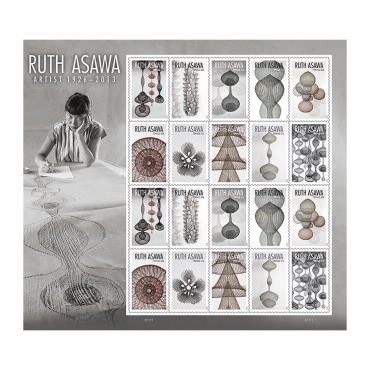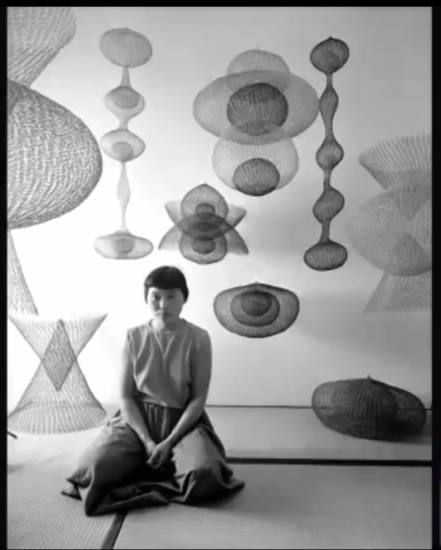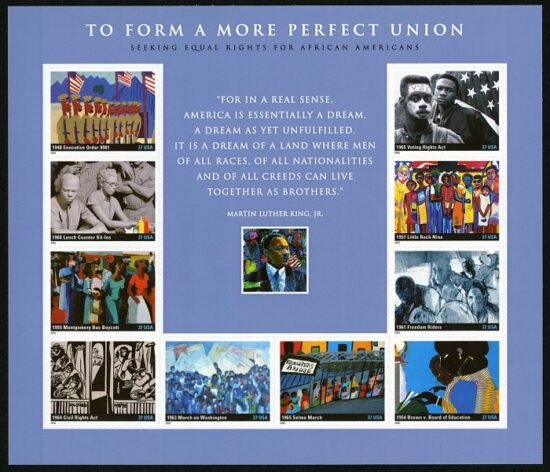This week’s contributing writer, Gigi Gleghorn, is a third year at Northeastern University studying Graphic Design and Art History. When she is not completing her design homework, she spends her time creating multimedia art pieces and linocuts.
VoCA is pleased to present this blog post in conjunction with Associate Professor of Contemporary Art History, Gloria Sutton’s Fall 2020 Art History Course: Disruptive Image Technologies at Northeastern University. This interdisciplinary course examines how the distribution, circulation, storage and retrieval of still and moving images have shaped the understanding of contemporary art.
Ethel Kessler has been in the business of designing United States Postal Service (USPS) stamps for over 24 years. The first stamp she designed, the Breast Cancer Research Stamp (1997), is still in production, has been printed over 3.5 billion times, and has raised over $91 million for breast cancer research. But, despite how impressive this feat is, that is not what Paul Ha, Director for the MIT List Center, talked about with Kessler during their virtual conversation, Turning Artwork into Stamps, on October 19th, 2020. Instead, they turned their attention towards Kessler’s newest stamp honoring artist Ruth Asawa. This stamp is intriguing because it depicts the work of Asawa, a Japanese-American woman, and was released during a time of uncertainty in regard to the future of the USPS. Furthermore, the Asawa stamp is a prime example of how the USPS represents the diversity of the American population much better than other institutions.

The Ruth Asawa Stamp sheet depicting Asawa sketching one of her wire sculptures accompanied by 20 stamps displaying her work. Image courtesy of the United States Postal Service website.
Asawa was born in a Los Angeles suburb in 1926. During World War II, when Asawa was just 16, she was sent to Santa Anita Assembly Center, an internment camp for Japanese-Americans outside of Pasadena, California. It was there where she encountered her first art training, mentored by Disney animators who were also forced into internment. She went on to study at Black Mountain College where she became enamored with forming lines. The best way to do this, she believed, was with wire. A trip to Mexico drove home this idea as she observed women weaving baskets out of fine wire. She began to create the delicate, ephemeral-looking sculptures that we now associate her with.

Ruth Asawa, in 1954, sitting in front of multiple sculptures she created in the 1940s. Image courtesy of the New York Times Style Magazine website.
Now, ten of these sculptures are pictured on US postage stamps, accompanied by a photo of Asawa and a sketch. Issued on August 13, 2020, these stamps debuted in a time of uncertainty regarding the USPS. Delays and backlog plagued the USPS as a new, Trump-appointed Postmaster General, Louis DeJoy, was assigned in June of 2020. DeJoy came under fire as he attempted to cut costs, causing severe delays with service, and confusion for Americans. Some people took to social media to spread the word about budget cuts of the USPS while others looked for a more concrete way to help, finding hope in the Asawa stamps. It was thought throughout the art community that maybe buying up enough of these stamps could possibly save the USPS. SFMoMA, Harvard Art Museum, the Boston Globe and many other institutions tweeted out about how necessary and delightful these stamps were and how everyone should go buy a few sheets. Paul Ha himself said he bought 100 sheets. Whether that is because they are well-designed and honor a great artist, or that Ha felt a glimmer of hope that his contribution could help save an integral part of the US, I am not sure. I would like to think it is a bit of both.
But these stamps are not just a simple symbol of saving the USPS; they depict the work of a Japanese-American woman, who was deliberately discriminated against by the American government. The irony is clear: a woman who was once forced into an internment camp is now a figure associated with saving the USPS. Yet, the more important notion to examine is the fact that the USPS is representing a diverse group of people. In their conversation, Ha and Kessler spoke about two other stamps she designed, the To Form a More Perfect Union stamp (2005) and the Bailamos stamp (2005). For the latter, which was about Latin dance, she had four different Latin-American artists create art around four specific dances. This was a way for people who had a connection to the subject of the stamp to contribute to it and make it more collaborative. But the fact that the stamp advisory committee even chose to create a stamp celebrating Latin dance is admirable. The other stamp, about the Civil Rights movement, was created similarly. Kessler took 10 milestones from the movement in the 1960s and found the piece of art she thought best represented that event. Almost all of the individual stamps are artworks created by African American artists. By supporting the creative input of many different voices, the USPS is setting an example for other institutions to follow.

Ethel Kessler’s To Form a More Perfect Union Stamp commemorating the civil rights movement of the 1960s featuring many works by Black Americans. Image courtesy of the United States Postal Service website.

Ethel Kessler’s Bailamos Stamp celebrating four Latin dances and featuring four different Latinx artists. Image courtesy of the United States Postal Service website.
Sadly, museums are one of the worst offenders when it comes to lack of diversity. A 2019 study showed that across all art museums, 85.4% of depicted artists were white. Only 9% were Asian, 2.8% Latinx, and a mere 1.2% were Black.[1] This lack of diversity is a large talking point in our current world, but museums still need to do their part to change these statistics. The USPS is setting an example by utilizing and exhibiting talented artists who may not be in the mainstream museum world. Ruth Asawa is not a household name, but because the USPS decided her work was important enough to Americans and the world that she deserved the recognition of being put on a stamp, her work now exists in the homes of many Americans. For some members of the art community and beyond, she is the face associated with possibly saving the USPS. This national recognition of a Japanese-American woman is something that museums need to look at and mimic in order to aid our country in becoming a more united and understanding nation.
[1] Topaz, Chad M. “Diversity in Artists in Major U.S. Museums.” Plos One, 20 Mar. 2019, journals.plos.org/plosone/article?id=10.1371/journal.pone.0212852.
